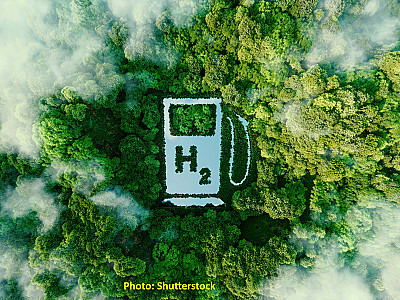Paving The Path To Sustainability: The Rise Of ESG
A step closer to a more sustainable future led by ESG.



Situated near the equator, Indonesia receives a bountiful supply of sunlight, making solar energy a promising alternative to fossil fuels.
However, is the country ready to adopt solar energy as one of its electricity sources?
This article delves into the current state of solar energy adaptation in Indonesia, emphasizing its potential, challenges, and the strides Indonesia has taken towards a sustainable future.
Indonesia's solar energy potential is immense, thanks to its equatorial location. The country boasts an average solar energy generation potential of 4.8-5.1 kWh/m2/day, equivalent to an astonishing 112,000 GWp/day.
To put this into perspective, it means that every square meter of land in Indonesia has the potential to generate between 4.8 to 5.1 kilowatt-hours of energy in a single day.
The eastern regions, in particular, exhibit even greater potential, with estimates reaching up to 6 kWh/m2/day.
Meanwhile, as of 2023, the operational coal power plants in Indonesia had a combined power capacity of approximately 40.65 thousand megawatts, and 9.2 gigawatts of it will be phased out by 2030 to reach the nation's net-zero target.
Unfortunately, while the sun's energy is free and abundant, the initial costs of installing solar panels can be a hurdle for many nations, including Indonesia. Financial incentives, subsidies, and financing options are crucial to making solar energy accessible to households and businesses.
Gaining support from Just Energy Transition Partnership (JETP), backed by developed nations in the world, is a step in the right direction, though challenges related to the alignment of priorities remain.
Currently, Indonesia leans towards prioritizing the development of a dependable energy transmission system.
This means that they focus on creating a network that efficiently delivers electricity from power generation sources to end-users (like homes and businesses).
On the other hand, IPG (International Partners Group), who are the donors for JETP, mainly endorses variable renewable sources like solar and wind power.
These sources are called "variable" because they depend on weather conditions. While they can be very effective for generating electricity in the right environments, these electrical sources are not constant or predictable like other forms of energy (e.g., fossil fuels).
On top of that, Indonesia's rooftop solar growth also faced a setback in 2022 due to a 10 to 15 percent capacity limitation imposed following overcapacity concerns.
The good news is, that in the past five years, Indonesia has made significant progress in solar photovoltaic (PV) installations, notably on rooftops of residential, commercial, and industrial buildings.
The 2021 directive set a goal of achieving 3.6 gigawatts of rooftop solar capacity by 2025, equivalent to over 1,000 large-scale wind turbines.
To accelerate the transition, investment in research and development, and collaboration with international partners are crucial.
The Cirata Floating Solar Power Plant, Southeast Asia's largest floating PV plant, is a testament to this commitment.
Covering 200 hectares, it's set to generate 245 million kWh of energy annually, providing for thousands of households.
Zainal Arifin, the Executive VP of Various Renewable Energy at PLN, confirmed that, after the inauguration, power from the Cirata plant will directly supply the Java-Madura-Bali system.
Additionally, the new capital's PLTS is expected to join the East Kalimantan grid in the first half of 2024.
Private sector involvement is equally vital. Companies like PT Agra Surya and Medco Power Indonesia are already pioneering solar power initiatives, demonstrating the business potential in this sector.
PT Agra Surya Energy, a solar panel developer, secured financing of IDR 254 billion and a foreign exchange line facility amounting to USD 232,000 from OCBC-NISP Bank.
Meanwhile, privately-owned energy provider Medco Power Indonesia has recently activated its 26 MW solar power plant on Sumbawa Island in West Nusa Tenggara and is actively building its expertise in solar-powered technology operation.
The solar energy revolution in Indonesia signifies more than just a shift in power sources. It's a catalyst for sustainable development, offering economic growth, job opportunities, and improved energy access.
Recent agreements between Indonesia and Singapore to export eco-friendly electricity also underscore the potential for cross-border collaboration in renewable energy.
Has concerns about renewable energy adoption and sustainable business practices in Indonesia? Connect with our expert network and explore how you can be a part of this green revolution!
We will give you updates of our latest news
A step closer to a more sustainable future led by ESG.

The world is already getting ready for a new, more sustainable transportation option. What has Indonesia done in promoting the use of electric vehicles?

Learn about the benefits of sustainable business models, how to build them, and examples of Indonesian companies that are already implementing them.

Indonesia possesses a vast opportunity in the green hydrogen sector. Learn the market potential of green hydrogen in Indonesia and the challenges investors may face in this industry.
